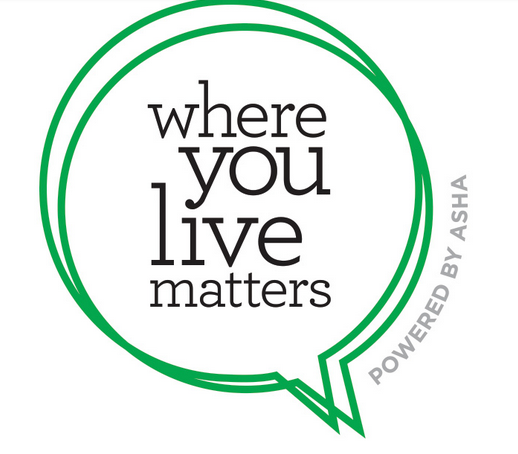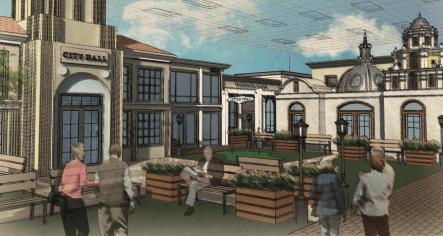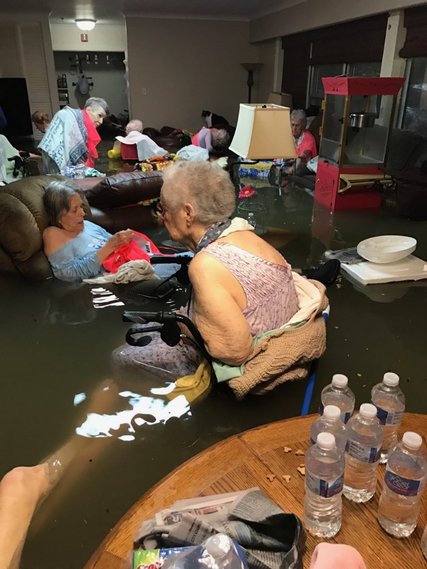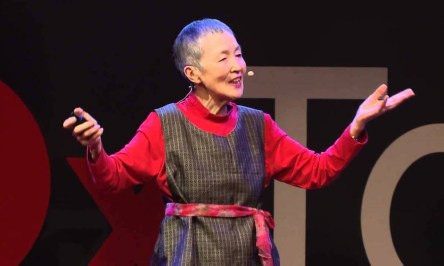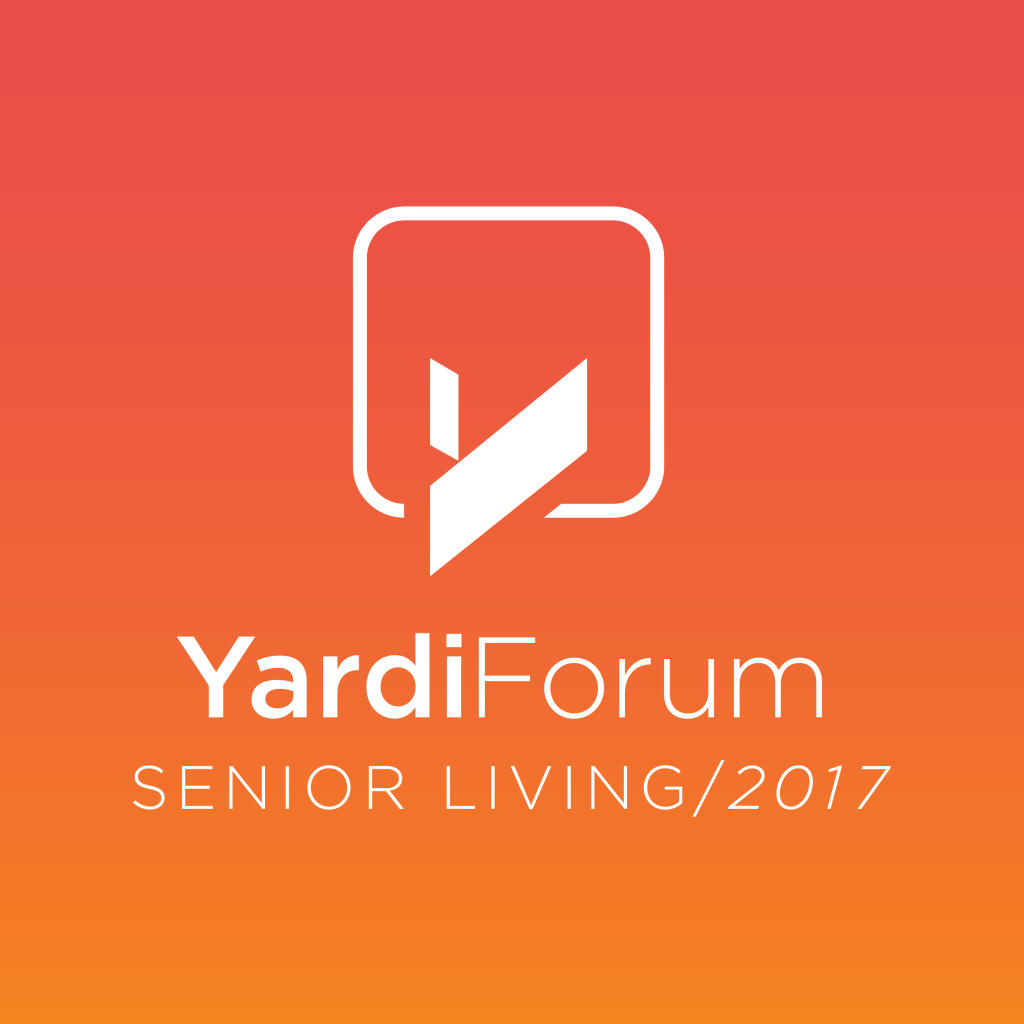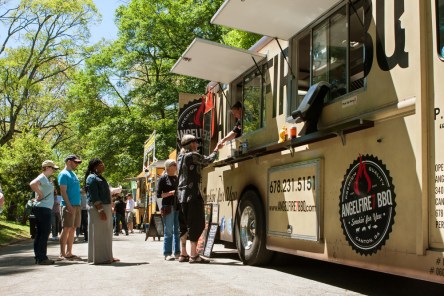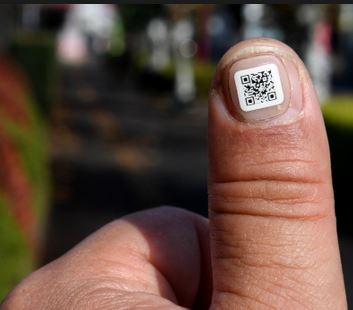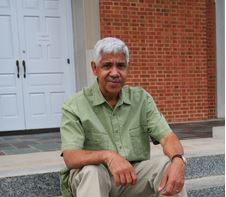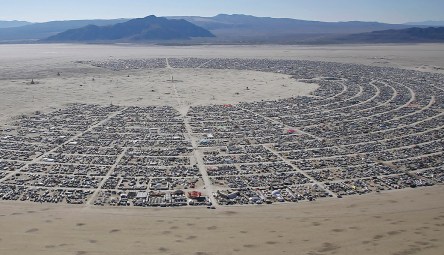Learning about senior living can be overwhelming, especially to newcomers. It’s an industry people seldom think about until they’re facing the decision to move in themselves or help a parent take the step. Everyone has questions. What it like to live in a community? What’s the difference between all the options? How much does it normally cost? Will Medicare cover it? How do families talk about it? How do they decide? Where do you even start? To answer those questions, older adults and their families can turn to Where You Live Matters. The website is an online library of educational content about senior living, designed to help people make informed, smart decisions about their housing and health needs. There are tons of articles, infographics and videos on a wide range of topics. The site was launched in 2016 by ASHA, the American Seniors Housing Association, but they’ve been building on it since. In 2018, they added a community search feature so that visitors can look up local options. And last fall, ASHA completely overhauled and re-launched the site. It’s now easier to browse on mobile, and there’s more content than ever. At the time of the website’s launch, ASHA noted that much of the online content about aging was written by marketers, and that academic information wasn’t clear enough for consumers. So they set out to create unbiased, research-based materials that anyone could understand. “Our members and organization are committed to giving consumers across the country a place to learn more about the senior housing landscape,” said David Schless, president of ASHA. “There are resources available, but we’re committed to painting a clearer picture.” And while Where You Live Matters is intended primarily for consumers, senior living providers can benefit too. Educational content for...
Senior Citizens’ Day...
A time for reflection
With new holidays and observances cropping up all the time, can be hard to keep track. But there’s one upcoming celebration not to be missed: Senior Citizens’ Day, marked each year on August 21. While thinking of ways to honor the special seniors in your life, let’s recall the origin of this important observance. It began with a proclamation by Ronald Reagan on August 19, 1988. Our former President lauded the achievements of our nation’s elders, thanked them for their leadership, and highlighted the ways in which older people, living longer and fuller lives than ever, continue to make their presence felt for their own good, and that of others. As we consider all the seniors we know and what they’ve contributed to our lives and to our society, it’s important to think about what we can give back. The Senior Citizens’ Day proclamation addressed this too: We can best demonstrate our gratitude and esteem by making sure that our communities are good places in which to mature and grow older— places in which older people can participate to the fullest and can find the encouragement, acceptance, assistance and services they need to continue to lead lives of independence and dignity. The words proclaimed decades ago still hold true. The most important way we can repay those who came before us is to ensure they’re well taken care of in the communities in which they now reside. How much progress have we made in the thirty years that have passed since these words were penned? While we still have opportunities to better the senior living industry, today’s seniors have more choices for quality care than ever before. From luxury independent living to high-tech, patient-focused care regimens, residents are no longer resigned to just a...
Yardi Senior Living Forum
Welcomes Clients to Santa Barbara April 25-26
The Yardi Senior Living Forum will return to the Hilton Santa Barbara Beachfront Resort on April 25-26, 2018. The event is a targeted, intensive learning and networking opportunity designed for senior living professionals including directors, nursing staff, sales and marketing, executives and more. Attendees will gain deeper insight into the Yardi Senior Living Suite, including Yardi Voyager, Yardi Senior CRM, Yardi EHR, Yardi eMAR and RentCafe Senior Living. “The Forum is a great way to brush up on existing product knowledge, learn about recent product enhancements, and get a view into our product roadmap,” shared Ray Elliot, vice president of senior living at Yardi. Why the Forum? The Yardi Senior Living Forum draws curriculum from the popular Yardi Advanced Solutions Conference (YASC). In addition to tracks targeted to senior living providers, the Forum also offers accounting, reporting, and technology classes. While YASC will continue to be a valuable resource for general senior living education, the conference now offers limited senior living courses. For more in-depth training on the Yardi Senior Living Suite, the Forum is now the go-to event for senior living clients. “The exchange of information when we come to these conferences [builds] the kind of relationship that helps our business, make our lives better and makes using the system better,” said Latonya Lawson, previous Forum attendee and Business Systems Manager for The Shelter Group. With education offered for basic to advanced users, the Forum has something for everyone! “Based on feedback from prior forums and new product features, we’ve added a number of new classes this year. In total, we are offering 52 unique classes with five courses to choose from in each session,” explained Elliot. In addition to courses, the Forum will provide one-on-one training with Yardi Senior Living technical staff, roundtables, and product roadmap sessions aimed to offer the latest scoop on what’s next from Yardi. A returning feature of the Forum, attendees will have access to Knowledge Central. This is the place to be if you want to learn more about new products and upgrades, or if you have questions about your current software. New to 2018, attendees can find RentCafe, EHR and eMAR experts in this space. Conference registration includes access to specialized education courses, roundtable discussions, breakfast and lunch buffets, along with networking and entertainment opportunities. Going Green We’re going green at the Forum! The Yardi Events app offers a paperless, mobile conference experience. Attendees can access all conference information, courses, social networking and in-app messaging all from their fingertips. The Yardi Events app is available for download in the Google Play Store and Apple App Store. A browser-based version, synced to the mobile app, will also be available so attendees can access all features from their desktop. User log-in details have been emailed to all registered Forum attendees. We’re looking forward to welcoming our clients at the Forum. Join us and register today! Already registered? Let us know you’ll be there and join the conversation on social media using #YardiForum. For more information about the conference, visit the Yardi Senior Living Forum...
Senior Living Retention
Adding Value with Activities
There is a perception that senior living residents are a captive audience. That’s not entirely true. Enhancements to dining and lifestyle services are a retention strategy for when residents and their families sit down to sign lease renewals. Let the value-add services that you offer outshine your competition. Unique Experiences Offer residents an experience that they can’t get when living with competitors. Think beyond crafts and day trips. Create experiences that allow residents to learn new skills and engage all their senses. (Instant-gratification is an added bonus!) Oregon-based Frontier offers an on-location craft beer brewery at its Aspen Ridge community. More than 80 percent of the residents work to create 12 beer varieties. The residents then enjoy the fruit of their labor every evening in the site’s biergarten. The program offers learning, experimentation, creativity, social interaction, and a sense of accomplishment. Aspen Ridge once hovered at 50 percent occupancy. After one year with the beer program, the property achieved and maintained 100 percent occupancy. Greg Roderick, president and CEO of Frontier Management explains, “We didn’t advertise any more than we already did. We just filled up. Word of mouth got around… [that] this is the coolest place to live.” Signature Products Consider working with local artisans to offer products that residents can’t get anywhere else. These products build a sense of brand loyalty and exclusivity for your property. Chicago-based Vi Living is the exclusive seller of Luxus, a signature label wine that residents have grown to love. The collaboration with Central Valley wineries has turned a dinner accent into a highlight at its properties. “I’m a big proponent of happiness at our property,” says Kevin Meredith, director of dining service at TidePointe, a Vi Community. “And having a wine that’s all our own — one that brings the exceptional into the everyday — is just another way to create that happiness.” Vi Living serves its wine in property restaurants. Each restaurant offers the variety and ambiance found at high-end restaurants off of the property which makes it a pleasure for residents to “dine in.” Giving Back Many seniors want to stay involved in their communities. This involvement removes a sense of isolation. In its place, residents feel needed, vibrant, and a productive part of their communities. Yardi client Senior Star of Oklahoma participates in the annual Walk to End Alzheimer’s. The event began with the Senior Star staff yet is open to residents as well. The relevance of the event will likely grow. Baby Boomers often serve as caregivers for loved ones with Alzheimer’s and other dementias. The fundraising event will be near and dear to many hearts. “The Walk To End Alzheimer’s provides a beacon of hope to those individuals and families coping with the terrible disease,” says Tyler Hanes, Project Director at Senior Star. When residents are able to contribute to their communities, they form tighter bonds and build...
Triggers to the Past
Memory Care
The past is alive in the unlikeliest of places. Nestled inside a 20,000-sqft light industrial building in the heart of Chula Vista, Calif., Glenner Town Square harkens back to a different era: 1950s San Diego to be exact. Conceived as an immersive experience for seniors in their 80s, Glenner Town Square is at the forefront of what’s being called Reminiscence Therapy. The hope is that by surrounding seniors with familiar touchstones, like a 1959 T-bird or black and white film, those suffering from dementia will be able to capitalize on their remaining cognitive function to interact with the outside world. “If you can create an environment that’s designed in a way that captures that part of their life and those memories that are still intact and strong, they can function in a way that’s competent,” explains Dr. Daniel D Sewell, Director, Senior Behavioral Health, UCSD in a video about the project. “They can be comfortable and feel good about themselves because it plays to the individual’s strengths.” A Multiplicity of Places Reminiscence Therapy (RT) focuses on creating an immersive environment for patients using “tangible props” from their past to help them preserve cognitive function and improve their quality of life. At Glenner Town Square, everything from building facades to the interiors is designed to invoke a past that, to many suffering from Alzheimer’s and dementia, feels much more real than the present. By creating a safe and familiar environment for patients, the creators of Glenner Town Square hope to provide a sense of comfort, peace and continued vitality for patients. In addition to the 8,500-sqft village – that includes buildings based on the city of San Diego from 1953 to 1961 – Glenner Town Square will include a working cinema, a 50’s-style diner, a...
Memory Care Cruise
Bonding Over Senior Health
This fall, aboard Holland America’s MS Eurdam, caregivers and seniors suffering from dementia and their families will set sail to cruise the Alaskan coastline while learn moreing about the disease. The brainchild of Lisa Maria Chirico, CEO founder of Nursinghomeology, the event is designed to “inspire and empower caregivers and their families.” First-Hand Experienc Chirico herself is no stranger to the challenges facing caregivers and family members, having had to care for her father who suffered from Alzheimer’s. Kathy Shoaf, RN, BSN, ATP and the owner of Elite Cruises and Vacations, will be co-hosting the event with Chirico. Shoaf has 25 years of experience in senior care management. A specialist in accessibility travel and geriatric neurology, Shoaf also served as inspiration for the cruise. “The idea for a dementia-friendly cruise grew out of Kathy Shoaf’s senior-friendly, ‘bucket list’ cruises,” Chirico told McKnight’s Senior Living in a recent interview. “Taking the idea to another level, Kathy began seeking out senior care professionals and former caregivers turned dementia coaches and consultants — like me — to co-host a cruise.” Communication and Commiseration Boasting an esteemed lineup of senior care practitioners and professionals, attendees will be able to participate in workshops, attend sessions and – most importantly – mingle with others professionals and family members experiencing similar challenges. Featuring Brian Kursonis, Founder and President of Faith2Care.org and blogger at withAlzmyheart.com, the cruise will also include talks from dieticians, physicians and dementia care educators. AlzAuthors group plans to host a Book Circle, and there will also be a screening and panel discussion of the film Do You Know Me Now?, recently awarded the Silver Remi Award from the Worldfest Houston International Film Festival. Chirico planned the event in order to provide professional caregivers, residents of assisted living and memory care communities and their families...
Aging in Place
Easy Design Hacks
According to the 2012 AARP Public Policy Institute study, more than 90 percent of seniors plan to age in place for the next five to 10 years. Today’s seniors value features that allow them to maintain independence within their home without relying on care providers or family. Fulfilling that dream may be harder than they think. Rodney Harrell, housing expert with AARP, estimates that only 1 percent of every 100 million US homes is conducive to aging in place. The typical home will need upgrades to accommodate aging residents. To appeal to aging residents—present and future—designers may consider several universal design elements that make housing more accessible without a structural renovation. Ease of Access The current cabinetry and doors in a home can receive an age in place update with a few simple additions. Consider drawer pulls and lever door handles in place of knobs, which can become challenging to grip. Sliding trays make deep cabinets easier to access. Soft closures minimize noise and prolong the life of shelving. New appliance lifts bring hard-to-reach items to accessible levels. Hardware Resources’ The Soft-close Mixer/Appliance Lift makes it easy to bring heavy or cumbersome items to counter level when needed. Users can then stow items out of sight when they are not in use by pulling upon the lever. The Soft-close Mixer/Appliance Lift handles loads up to 45 pounds. Elevated microwaves save counter space but they may be difficult to reach. Installing the microwave at counter height or waist height offers greater accessibility as users’ range of motion and mobility change over time. By installing showers with hand-held showerheads, built-in seats and grab bars, residents can enjoy improved functionality for multiple stages of life. Accessibility National Association of Home Builder (NAHB) recommends recommends that washing machines...
Seniors + Safety
Hurricane Harvey
Viral photo of flooded assisted-living facility in Houston demonstrates importance of disaster preparedness for senior living communities. With so many heartbreaking images of the devastation visited upon Houston by Hurricane Harvey, the photo of residents of the La Vita Bella assisted-living center in Dickinson stands out. The photo, which depicts several seniors submerged in murky, waist-high flood waters, triggered outrage after gaining widespread attention on Twitter and other social media outlets. By Sunday afternoon, an evacuation was underway, with all the eventually relocated to a nearby nursing home. With a new photo of the now safe and dry residents now making the rounds online, questions still linger regarding the delay in emergency services, with some of the resident’s family members telling CNN they were forced to post the photo on Twitter in an attempt to trigger a rescue effort. “They were basically told no one was coming because they couldn’t reach them,” Kim McIntosh, mother of resident Trudy Lampson, told CNN. “That’s when we decided to go ahead and tweet the photos.” Preparing For Disaster While the situation at La Vita Bella is, hopefully, an extreme example, the catastrophe triggered by Hurricane Harvey serves as yet another reminder of the importance of disaster preparedness. As Jay Shelton, Senior Vice President, at Assurance Risk Management, writes in a December 2015 issue of Senior Housing Business, “The best time to write one of these plans is, frankly, yesterday.” “Without prior planning, you leave your organization open to financial disaster,” he continues, “especially if you are forced to close operations for a period of time. In addition, without a proper plan to cope with a disaster, your facility may face lawsuits from vendors, employees or residents’ families claiming negligence.” Prioritize and Delegate When developing an emergency preparedness...
Building Bridges
Memory Care
Recently recognized as a Dementia Capable Society Leader by Dementia Care Specialists, Florida-based senior living provider The Arbor Company has announced the introduction of its Bridges memory care program at the company’s Barrington Terrace senior living community in Fort Myers. The Arbor Company began expanding its dementia care services last year with specialized training for its care providers via webinars and in-person classroom instruction. Decrying the standard, “one-size-fits-all” approach to most memory care issues, the company’s Bridges program is meant to provide a more tailored solution. The program’s three “neighborhoods” cover the range of memory care needs, from assisted living to early stage dementia, with customized 24-hour support. At the assisted living level, residents receive minimal to comprehensive care based on their needs and lifestyles and designed to grow as those needs change. At the Bridges level, a “high-sensory, purposeful environment” groups residents based on similar stages of memory loss for less isolation and a more comfortable living environment. At the final stage, the Evergreen neighborhood includes 24-hour support and care based on “the latest dementia research.” “The services and programs Barrington Terrace offers its residents are beyond compare,” Laura Ellen Christian, The Arbor Company’s Vice President of Engagement and Training said in a statement. “We are excited to introduce the Bridges concept to Fort Myers and to the families who will benefit from our unique philosophy of memory care.” In addition to individualized care programs based on a resident’s specific needs, the Bridges program also provides counseling and support for family members. With the goal of making memory care affordable and effective, the Bridges program at Barrington Terrace gives residents access to the latest in dementia care in a warm, inviting environment. “Our new neighborhoods at Barrington Terrace make an immediate impact upon families who...
Masako Wakamiya
Busting Up Stereotypes
81-year old Masako Wakamiya is proving to the world that age is really just a number. At a TEDx conference in Tokyo, a lively, energetic, self proclaimed “chatterbox” Masako professed angst at the thought of retiring at age 60–the requirement in Japan. It’s why after 43 years working at a bank, she decided to teach herself how to use a computer. In those days computers were not the intuitive, user friendly machines we have today. Masako recalled the three months it took her to set up and learn how to operate her computer. “My face was covered in sweat and tears,” she described. That same determination is what lead Masako to create her own app. But not just any app. Masako decided to create one specifically for elderlies after noticing a shortage of fun apps aimed at people her age. “We easily lose games when playing against young people, since our finger movements can’t match their speed,” explains Masako. Her app, Hinadan, is an iOS game based on the traditional Japanese festival Hinamatsuri, or Doll’s Day. During the festival, ornamental dolls representing the emperor and his followers are dressed in traditional garb and displayed in a specific arrangement. The game aims to teach players the correct positions by having 12 dolls that players must situate properly on a display with four tiers. Once the challenge has been successfully completed, a congratulatory message pops up. “I [would] encourage [old people] to start having fun experiences using computers,” she explained. When she is not teaching computer classes or blogging, Masako leads the Mellow Club, a community she founded for retirees that aims to encourage active aging. As if all this was not impressive enough, she also runs the Mellow Denshoukan, a digital archive of personal experiences...
Kindness Rules
Senior Giving
To mark two decades in the senior care industry, Benchmark Senior Living recently embarked on a seven state mission to spread kindness and neighborly love in towns and neighborhoods where the company’s 54 senior living communities are located. For the month of June, residents living near a Benchmark community discovered care packages on their doorstep along with small helpful acts like a newspaper moved closer to their front porch, all with a note commemorating Benchmark’s “Radiant Acts of Kindness.” Employees committed to 1,000 such acts throughout the month. “This is Benchmark’s 20th anniversary year, and we want to give back to the communities and families that have supported our company’s growth since 1997,” Tom Grape, the company’s founder, and CEO said in a statement. “So, every one of our 54 senior living communities across seven Northeast states — and our home office in Waltham, Mass., — has committed to performing at least 20 Radiant Acts of Kindness during June in their local neighborhoods and towns.” Located in Waltham, Mass., Benchmark Senior Living operates 54 senior living communities throughout the Northeast. They offer services ranging from independent living to skilled nursing and memory care. For the last nine years, Benchmark has been recognized by The Boston Globe as one of the “Top 100 Places to Work,” and many of Benchmark’s executive directors and staff embraced the June initiative. Every one of Benchmark’s communities committed to the 1000 Acts, with many taking a creative approach that went beyond gift baskets to include washing cars, providing free tennis balls to neighborhood dogs to handing out random gift certificates. “We can’t wait to share these compassionate acts with West Chester and surrounding areas,” commented Doug Buttner, executive director, Wellington at Hershey’s Mill. “Our employees already have surprises prepared...
Bilingual Brains
Dementia Prevention
Over 60 percent of the world’s population is bilingual, and it’s long been known the capacity to understand two or more languages can help older adults maintain healthy brain function and stave off dementia.. With more than 5 million Americans living with Alzheimer’s, the ability to speak two or more languages isn’t just a party trick… it can be a lifesaver. A 2013 study published in Neurology determined bilingualism could delay onset of dementia by almost 5 years. The study’s authors discovered the bilingual benefit occurs regardless of education, sex or even literacy.Moreover, because bilingual brains are accustomed to understanding more than one language, they are well equipped to manage degeneration and neuron loss by utilizing alternative ways to function. “After years of daily practice managing interference between two languages, bilinguals become experts at selecting relevant information and ignoring information that can distract from a task,” explains Dr. Ana Inés Ansaldo, a researcher at the Centre de recherche de l’Institut Universitaire de gériatrie de Montréal. “In this case, bilinguals showed higher connectivity between visual processing areas located at the back of the brain,” she writes in summary of her research on the differences in brain function between bilingual and monolingual seniors. “Data indicate[s] that the bilingual brain is more efficient and economical, as it recruits fewer regions and only specialized regions.” Multilingual Multitasking Dr. Ansaldo’s research identified two cognitive benefits associated with bilingualism. While monolingual seniors use diverse brain areas when completing cognitive tasks, bilingual adults save resources through centralized and specialized functional connections. Additionally, when completing cognitive tasks bilingual seniors use less of the brain’s frontal regions, which are more vulnerable to aging. Dr. Ansaldo theorizes these benefits are what allow bilingual seniors to stave off dementia and other signs of cognitive aging. “We...
Help Wanted
Addressing An Aging Workforce
Born between 1981 and 1998, Millennials currently make up a third of the US workforce, but those numbers will need to rise exponentially in order to meet demand. According to the United Nations, the world’s advanced economies are experiencing a rapid decline in working-age population. The UN projects the available workforce to decrease by 5% within the next three years. That decrease is due primarily to aging of the current labor force, which creates an additional burden for country’s with wage-based entitlement programs like social security. As the number of recipients for these programs increase, the workforce contributions struggle to bridge the gap. In 1945, the ratio of workers to retirees was 41.9 to one. By 2010, that number had dropped to 2.9, with the number expected to drop to 2-to-1 by 2030. Ebbs and Flows As the Baby Boomer juggernaut moved from childhood to young adulthood, lower birthrates followed in their shadow. For years, there’s been growing concern over what would happen once the boomer generation hit retirement. The smaller Gen X demographic averaged a mere 3.4 million births per year – or 65 million total – not enough to supplement the 76 million boomers born between 1946 and 1964. Now it appears the tides are shifting. Sometime in April of last year, the U.S. population reached a significant milestone. For the first time in over fifty years, Baby Boomers no longer claimed the biggest portion of the country’s population. Hitting a high of 75.4 million, Millennials edged out the estimated 74.9 boomers to seize the crown. The Millennial population is expected to peak at 81.1 million by 2036 while the Boomers will shrink to 16.6 million by 2050. Shrinking Workforce With 83 million potential workers, the Millennials appear to be just what...
Senior Living Forum
Yardi Events and Conferences
Whether you are a director, care provider or sales and marketing professional, you won’t want to miss the Yardi Senior Living Forum. With an eye towards expanding training and networking opportunities for Yardi clients, Yardi launched the Yardi Senior Living Forum in 2016. After the resounding success of the inaugural event, a second Yardi Senior Living Forum has been scheduled March 29-30 in Santa Barbara, Ca. The smaller event offers a more focused presentation of Yardi products designed to meet the specialized needs of clients working in the senior living industry. Participants will get the opportunity to gain deeper insight into the Yardi Senior Living Suite, including Voyager Senior Housing, Yardi EHR, Senior CRM and RentCafe Senior Living. “Support is a focus for us,” Ray Elliott, Vice President of Senior Living, explained when the 2016 Senior Living Forum debuted. “That includes how we help the client to implement the product, and ongoing support afterward “We recognize that the senior living industry has unique training staffing needs.” A YASC Alternative Set against the backdrop of sunny Santa Barbara, the “American Riviera,” the primary goal of the Yardi Senior Living Forum is to create a one-of-kind educational and networking experience. While YASC will continue to be a valuable resource for Senior Living clients to attend classes on general functionality and ancillary modules, the conference now includes only a limited amount of Senior Living specific content. For expanded, detailed coverage of the products in the Senior Living Suite, the Forum is the best option. The forum will provide in-depth instruction by Yardi Senior Living technical staff, along with product roundtables and product roadmap sessions. The Forum will benefit operational staff, including executive directors and administrators, clinical directors and healthcare professionals, sales and marketing staff, and business managers. A full conference registration includes...
Food Truck Fun
Senior Living Trends
Food trucks provide the perfect vehicle for senior living communities looking to increase brand awareness and improve the resident experience. With a sense of celebration and a tang of the exotic, food trucks do more than sling tacos – they bring people together. Over the last few years, these compact purveyors of tasty treats have taken over parking lots and commandeered fairgrounds. Now senior living providers are getting in on the fun. For communities looking to attract new prospects and enhance the resident experience, food trucks are an easy way to update dining options and lure prospects. That’s because dining rates high when it comes to assessing the resident experience. As the introduction to the latest report from Senior Housing News on senior living dining trends explains, “Dining drives senior living businesses – there’s no question about it.” Connecting the Community For many senior living residents meals provide a critical link. In the dining hall, seniors interact with each other, staving off isolation and providing an antidote to loneliness. Holidays, special events – even just Sunday breakfast – all offer the opportunity to foster a sense of community. As a 2010 report from Unidine reiterates, “Senior dining programs facilitate social interaction, support medical care as well as health and wellness objectives and provide a critical link to the lives and communities of residents.” Expanding Experiences Because of senior’s unique nutritional needs, meal planning at most communities is complex. Everything from ingredients to taste to medication side effects must be taken into consideration. Dietary restrictions and weight management are equally important. With so much micromanagement, there’s little room for spontaneity. Adding food trucks to the rotation allows communities to provide a little variety while still keeping a close eye on the menu. “I see no...
Seniors + Students
Intergenerational Housing
Senior housing facilities around the globe are opening their doors to students. The creative solution cuts housing costs for young adults while providing nourishing services for the elderly. Such programs are gaining popularity in the United States. The unlikely pairing comes with an impressive array of benefits for seniors. A study published by the National Institute on Aging (NIA) reveals that changes in social behaviors can prevent or decrease Alzheimer’s disease and other forms of cognitive decline. Seniors can enjoy these improvements without the use of medications or supplements. NIA also reports that intergenerational living can help seniors lower their blood pressure and fend off corresponding illnesses. Researchers cite a strong correlation between loneliness and elevated systolic blood pressure. The same report acknowledges that intergenerational social activities minimize age-related disorders such as rheumatoid arthritis, osteoporosis, and even some forms of cancer. Students also benefit from their involvement in senior care. Many of the programs offer free or discounted rents that reduce student loan debt. In the US alone, student debt exceeds $1.3 trillion according to Forbes. The partnership also contributes to a stronger workforce: young adults can focus on their education, productive internships, and innovative projects instead of working multiple minimum wage jobs to pay rent. One of the earliest intergenerational living programs started in the Netherlands. Humanitas in Deventer hosted five students rent-free in exchange for 30 hours of “good neighbor” service. Activities can include spending time with their elderly neighbors, watching sports and movies together, shopping, and celebrating special occasions. Students also supplement the efforts of professional caregivers when seniors fall ill: Humanitas head Gea Sijpkes reports that companionship during illness minimizes feelings of disconnectedness. It can be challenging when residents’ only interaction comes from caregivers who remind them of their failing...
Dementia Tags
Dementia Care
As a dementia crisis looms, one Japanese city has ditched GPS locators and other wearable devices in favor of low-tech stickers for tracking elderly patients. While dementia locators have been around for a couple of years, a new system developed in Japan aims to fix some of the issues inherent t wearable tracking devices. Ditching pendants and pocket GPS trackers, a company in Iruma, Japan has developed a QR-code tagging system for dementia patients. Beyond the ID Tag Typical medical ID bracelets and patient wristbands still serve an important function, but anything wearable can be damaged or lost. Because dementia patients are often incapable of supplying basic information about their identity, the ability to affix a permanent identifier has become increasingly important. While microchips may seem like an obvious solution, without the tools to read an implanted device any subcutaneous identifier has limited utility. Similarly, GPS trackers must often be within range of satellite or mobile service to be useful. As a result, there’s a growing need for a practical, low-cost and easily managed solution. The one-centimeter QR stickers recently deployed in Iruma are water resistant and designed to last up to two weeks. They can be affixed to a fingernail or toenail, and can be read by any free QR code mobile app. The code itself includes a unique identifier, along with the name, telephone number and address of the patient. The service, which is free, was just launched in November of this year to positive response. “There are already ID stickers for clothes or shoes, but dementia patients are not always wearing those items,” a Japanese official explained to AFP news. “Being able to attach the seals on nails is a great advantage.” A Crisis Point The World Health Organization estimates some 36...
Atlanta’s Geezer Squad
Senior Living Tech Assistance
In one Atlanta senior care facility, residents keep IT support in-house, thanks to the Geezer Squad. Tech hiccups can fell even the most tech savvy amongst us. For senior citizens, reboots and restarts are difficult to navigate. While sometimes a wayward grandchild can be corralled into providing IT support, not everyone has access to a preteen tech support. Enter the Geezer Squad. At one senior living facility in Atlanta, GA, residents aren’t outsourcing IT support. They’re keeping the fix in-house by deploying a team of fellow residents trained to fix most tech related problems. Beyond the Computer Lab When Jim Cochrane arrived at Lenbrook, a continuing care retirement community in Atlanta, most of his fellow residents depended on the computer lab for their online activities. Over the years, smartphones and tablets have taken over, providing more options but also opening the door to more confusion. Responding to the need for one-on-one help, Cochrane and his tech team decided to step into the void. “The Geezer Squad part just developed naturally,” Lenbrook resident Jim Cochrane tells Senior Housing News. “Most of the residents now know who to call when they have a problem. People get stuck, and they don’t know what to do next. We can show them how to connect to the Internet, et cetera …In our population, some folks are reluctant, but getting them to feel confident is important.” Resident-Powered Support When a modem goes down, or a password won’t work, the Geezer Squad answers the call. With over 1000 service calls under their belt, the Geezer Squad has expanded its expertise beyond the occasion router. According to Cochrane, the number and variety of devices the Geek Squad services “has exploded.” “We have three distinct levels of technology users,” says Lenbrook CFO Daniel Dornblaser. “We have people who don’t use technology in their day-to-day lives, no cell phones. We have folks in the middle who might use some [tech], like emails. Then we have the folks who are texting all the time, emailing, using Netflix.” “It’s a resident-developed group that is there to help fellow residents about various IT issues,” says Dornblaser. “The group has people who are proficient in Apple computers, iPads, tablets, cell phones. The squad is available to help residents whenever there is a problem.” A Will and a Way Cochrane, a graduate of Georgia tech who’s career at Bell Laboratories focused on programming and computer system design, took the initiative after seeing a real need for tech assistance and education. With small group of about four volunteers at his side, Cochrane helps Lenbrook’s 400 residents manage devices and learn how to use technology to stay connected with friends and family. “About six months after starting the classes, I realized that we needed to form a support group to help residents with specific problems,” says Cochrane. “Mostly we help with email, downloading photos of the grandchildren, sending documents and photos to family and the like. We keep a log and — average 12 house calls a month.” “At first, we worked almost entirely on residents’ personal computers — Macs and Windows machines,” he continues. “More often now, though, we’re more likely to be helping someone set up and use their new “device.” By device, I mean an iPad or smartphone or some sort of tablet or e-reader. They are a popular gift from the “grown kids, ” and we’re seeing residents using them in the lobby and in our restaurants.” While there was a bit of wariness about these modern gadgets and gizmos, Cochrane discovered that a little patience – combined with some incentives – usually did the trick. “It turns out, when someone has a strong motivation to use email, they’ll learn it. That’s what usually brought people in – they wanted to email their...
Next-Gen Employees
Millennial Employment
The senior living industry needs 1.2 million new employees by 2025 in order to meet demand, and that means finding new ways to connect with job-hunting millennials. That “silver tsunami” set to transform the senior living industry will not only change the way providers reach out to residents and provide care, it will also impact staffing and employment outreach. A recent study conducted by Argentum indicates that the senior living industry will have to increase staff by 1.2 million within the next ten years. While some of these new hires will be professionals already working in the industry, a significant portion of potential prospects will be millennials. So how can a senior living provider successfully connect with these young, tech-savvy job seekers? The answer lies in leveraging the latest technology to cultivate a ubiquitous web presence based on partnerships, networking, and a clear articulation of the non-income benefits of committing to a career in senior living. The College Connection According to a recent Senior Housing News report, most college grads conduct their career search through a university program. As a result, the report urges senior living providers to nurture affiliations with local colleges to heighten awareness of career potential within the senior living industry. “We’re facing some real leadership challenges,” Kevin Heffner, director of external relations at the University of Maryland in Baltimore County (UMBC)/ Erickson School, told Senior Housing News. “Some of the titans of the industry are retiring. We’re doing the best we can to develop leaders to fill that void. Providing the opportunity for continued education, in the form of a master’s program or internal certification program, would also make a potential employer stand out from the pack. Not only will these incentives lure ambitious recruits, it also provides potential employees with...
No More Falls
Senior Safety Technology
For many senior citizens, the choice to move into assisted living begins the moment staying at home becomes dangerous. Tripping over carpet or a tumbling down a flight of stairs can no longer be dispatched with an ice pack or a trip to urgent care. For adults 65 and older, these incidents often result in broken bones, head injuries or even death. But what if a fall could be predicted and prevented? That’s the hope behind a new sensor system developed by the Sinclair School of Nursing and the College of Engineering at the University of Missouri. Through a combination of onsite monitoring and data analysis, the sensors record the gait and speed of residents. That information can then be used to forecast when a fall might be imminent helping care providers take action before calamity. “Assessment of these functions through the use of sensor technology is improving coordinated health care for older adults,” Marjorie Skubic, director of the MU Center for Eldercare and Rehabilitation Technology, tells Engineering.com in a recent interview about the sensor system. Watchers on the Wall The sensor project is part of ongoing research currently underway at TigerPlace, a Missouri retirement community that promotes “aging-in-place.” Part of a collaboration between Americare Corporation and the University of Missouri, TigerPlace’s main objective is to “maximize the independence of residents while supporting research.” The facility has been using the sensors as part of ongoing research to study how early detection of “changes in function” can be used to target health problems before they become critical. As part of that process, the project’s In-home Monitoring System (IMS). IMS wirelessly records and shares motion data and images collected by sensors placed throughout the home. If significant changes in activity are detected, the system can send...
Sharing Not Caring
Social Media Abuse
After a rash of inappropriate and unsettling photos and videos posted by nurses and staff, the senior living industry is stepping in to protect the privacy of residents. At its best, social media strengthens human connection and makes the world feel a little bit friendlier. Unfortunately, when used maliciously or thoughtlessly, social media can become a weapon wielded against the weak and voiceless. After a disturbing series of abusive and demeaning social media posts by care providers at assisted living facilities throughout the U.S., the industry is stepping in to set up guidelines and enforce HIPPA regulations. In a statement to ProPublica, Sen. Charles Grassley, R-Iowa, and chairman of the Senate Judiciary Committee said, “Nursing homes are obligated under the law to keep their residents free from abuse. Exploitation on social media is a form of abuse, and the agency memo makes that clear. We need to prevent it, and we need to punish it when it happens.” Right to Privacy With cameras and video recordings readily available, more and more residents have become the subject of ridicule and exploitation. While some of the victims are aware of what’s going on, just as many are caught in the throes of real pain and suffering – sometimes even death. Because of the egregious behavior by some nurses and staff members at assisted living facilities, the Centers for Medicare and Medicaid Services (CMS) recently outlined a set of standards aimed at protecting residents from the most severe of social media cruelties. In a memo about the issue, CMS unequivocally establishes that “each resident has a right to be free from all times of abuse, including mental abuse.” “Mental abuse includes, but is not limited to, abuse that is facilitated or caused by nursing home staff taking...
Senior Smart Homes
Independent Living
Thanks to the latest smart home technologies, today’s older adults can continue to live independently while staying safe, secure and connected. The hype surrounding smart home technology often focuses on how it affects the millennial generation. But as Sunrise Senior Living points out in a recent blog post, in many ways, it is senior citizens who stand to gain the most from today’s smart home innovations. Automation and monitoring provide a customized home environment that promotes safety and security. Even better, a connected home means older adults retain a measure of independence even as they begin to require more care. “Tech advances are changing seniors’ lives and the lives of their caregivers by allowing them to live more self-sufficiently, whether living on their own or in a senior living community,” writes Sunrise Senior Living blogger Hannah West. “Comfort is as much a priority as safety,” West concludes. Alone But Not Lonely As part of a graduate project at the Umeå Institute of Design’s Interaction Design in Sweden, designer Kevin Gaunt envisions a smart home designed specifically for older adults. Rather than catering to millennials who “effortlessly interact with technology,” Gaunt chose to focus on how the elderly could benefit from having a living space configured with the latest apps and devices. “As new technologies arrive, we tend to assume that – as in the past – younger generations will be the early adopters,” Gaunt tells Fast Company, but he believes older generations are the ones who will really benefit from new, inexpensive smart home technologies. In Gaunt’s vision, seniors will live in bot-controlled homes outfitted with sensors. As the bots interact with the home’s inhabitants, a sort of symbiotic relationship develops. The bots can help sseniors stay connected with the outside world through shopping,...
Truth in Numbers
Accounting for Senior Living
Thanks to detailed accounting options and superior customer support, Sentio Healthcare Properties continues to expand its use of Yardi Voyager across its property portfolio. As a REIT specializing in senior living, Sentio Healthcare Properties oversees a diverse portfolio ranging from medical office buildings to senior housing, including independent living, assisted living and memory care facilities. At the company’s Orlando headquarters, about 20 employees work with third party operators at 34 properties located in 16 states. “REITS are not the easiest structure to understand,” admits Julia Avallone, Manager of Property Level Accounting and Asset Management (CPA) at Sentio Healthcare Properties. “I’ve been at Sentio nearly three years, and I’m still wrapping my brain around all the accounting complexities. That being said, I think it’s rare to find an accounting role where you feel that you are making a positive contribution to somebody’s life. I feel that my role at Sentio is mission driven and contributes, albeit in a small way, to the quality of life the residents in our facilities enjoy.” Making the Switch to Senior Living Avallone began her career in public accounting mainly for real estate clients. Eventually, Avallone decided to transition into another industry, and one of her managers recommended Sentio. “My husband was also in public accounting, and it was too much to both work in the (same) industry,” explains Avallone. “I was looking for a change, and one of my managers knew the controller at Sentio. It was a good fit.” Avallone used to handle accounting for approximately half of Sentio’s portfolio, but is in the process of transitioning to an asset management role. Because Sentio’s properties are located in a variety of different markets, each community comes with its own advantages and challenges. For example, Texas recently moved to...
Watch Works
Wearable for Seniors
With its user-friendly interface and advanced health and safety features, the Apple Watch Series 2 may be the perfect wearable for senior citizens. While wireless earbuds, dual cameras and the death of the audio jack dominated the post-game analysis of Apple’s 2016 Keynote, the Apple Watch updates demonstrate the genuine potential of today’s wearable technology, especially for senior citizens. While the first Apple Watch proved a bit of a disappointment, the Series 2 raises the bar with enhanced functionality and modern design. Combined with an updated watchOS and a slew of new apps, the Apple Watch Series 2 provides health and safety options perfectly attuned to the needs of today’s aging population. Safe and Sound The original Apple Watch arrived with plenty of choices for security-minded users. Over the last year, developers have been hard at work designing emergency alert apps. Dialing 911 during an emergency may seem relatively straightforward, but apps like HelpAround provide a sort of panic button that notifies authorities and a list of designated contacts when activated. Now the watch itself makes it even easier to reach out during a catastrophe. Pressing and holding the side button activates the watch’s SOS function, placing an immediate call to 911. The watch then automatically sends a message to designated contacts with location information and a map. After the call, the watch itself will display medical ID information, including age and allergies and other important information. The flashiest Apple Watch upgrades announced at the keynote include waterproofing and a new ceramic body almost impervious to the dents and scratches that plague most wearable devices. In terms of safety and security, but the device’s built-in GPS is what really shines. By incorporating the watchOS maps, the Series 2 can also display routes and maps...
Burning Bright
Fighting Ageism at Burning Man
Burning Man may be associated with millennials and aging hippies, but thanks to Juniper Communities, the latest contingent of desert marauders could include your grandmother. Every year, tens of thousands of souls descend upon Nevada’s Black Rock desert with one shared purpose: to build (and dismantle) the ultimate egalitarian community designed for a new age. While all are welcome on “the Playa,” over the years, a stereotype has emerged and attendees are expected to be young, creative and open to anything. This year was a little different. In addition to the fire-eaters and Silicon Valley professionals, a group of senior citizens joined the crowd, ready to make friends and present a different perspective on aging in the modern world. Joining Generations Juniper Communities provides assisted living, Alzheimer’s Memory Care and Skilled nursing at several facilities throughout Colorado, Florida, New Jersey and Pennsylvania. As part of the company’s commitment to combating ageism and remove the negative associations with elder care, Juniper Communities’ Founder and CEO Lynne Katzmann came up with the Burning Man plan. “Juniper decided that we wanted to find a good venue to talk about ageism,” Katzmann explained to Senior Housing News last year. “What better place to do that than in an intentional community made up of mostly young people who are open to new ideas and equality?” “We need to help people understand that aging and dying are two separate things,” she says. “We need people to understand that older people are fully participating in life—and have a lot to add.” “By taking an intergenerational group, we raised awareness not just that older people can handle Burning Man, but also that it’s a place where seniors thrive,” Katzmann explained. “People don’t really associate Burning Man and senior housing, but we can...

